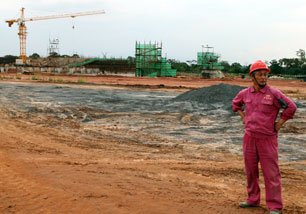Foreign aid from ‘new donors’ (aka emerging economies) now makes up around $10bn/year.
And this has doubled in the last five years as the Economist noted last week in a piece on ‘aid 2.0’ triggered by the news that India is to set up its own aid agency with a budget of at least US$1.5-$2bn/year (or triple the annual value of UK aid to India leading to the appearance UK aid is being subcontracted).
One might well ask what if most of the world’s poor live in new donor countries – does it suggest the poor overseas are more deserving than the poor at home?
So, what might aid 2.0 looks like?
One way to take a look is with Chinese foreign aid now that there’s a fascinating dataset on Chinese aid projects (here) that has been painstakingly put together by the Aid Data guys. (By the way a health warning: I am not a Chinese aid expert – read a good read here or the new Chinese government aid white paper here or search Duncan Green’s blog for various China pieces).
The Aid Data dataset of Chinese aid projects covers some 500 Chinese foreign aid projects from 1990-2005 by the year, project description and country recipient and in a very few cases the financial value. For example, in 1991 Chinese aid funded a duck breeding farm in Ecuador breeding 70,000 ducklings a year (wonder if it’s had a Randomised Evaluation yet?).
Of course this is just the project aid declared by the Chinese Ministry of Commerce and data only runs up to 2005 but it makes fascinating reading if you’ve ever wondered what ‘new’ donor’s aid looks like and how different or not it is from ‘traditional’ donors aid (meaning the OECD countries).
So what does Chinese project aid look like based on the Aid Data dataset?
A quick scan suggests: (i) About a half of the projects listed have a direct relation to standards of living via social investments in health equipment or education facilities or via economic growth and production or income generation; (ii) As is well known there’s lots of infrastructure spending (aka aid as concrete) – about a quarter of the projects listed relate to infrastructure – water and power infrastructure in particular; and (iii) Perhaps surprisingly, a quarter or so of all the projects listed relate to leisure and sport – there are numerous new or renovated gymnasiums in Africa (eg Niger, Rwanda and Benin to name a few) and new sports stadiums – one of the biggest being a 30,000 seater stadium in Togo ‘covering an area of 36,000 square metres and including, one Olympic track, an electronic scoreboard, quality pitches and a giant screen’.
So, how different is all this from ‘traditional’ aid or aid 1.0? Much bilateral aid in recent years might well fit into the first grouping of social investments and income generation; some would fit into infrastructure but perhaps less so and probably little ‘traditional’ aid would be leisure or sport related I’m guessing…
And, more importantly perhaps is all of this is probably not where the big money is given the package aid deals of trade and investment from China, the real value probably lies in those non-aid, trade and investment aspects of the deal than in gyms and duck farms (even if they do breed 70,000 ducklings a year which sounds pretty impressive to me).




